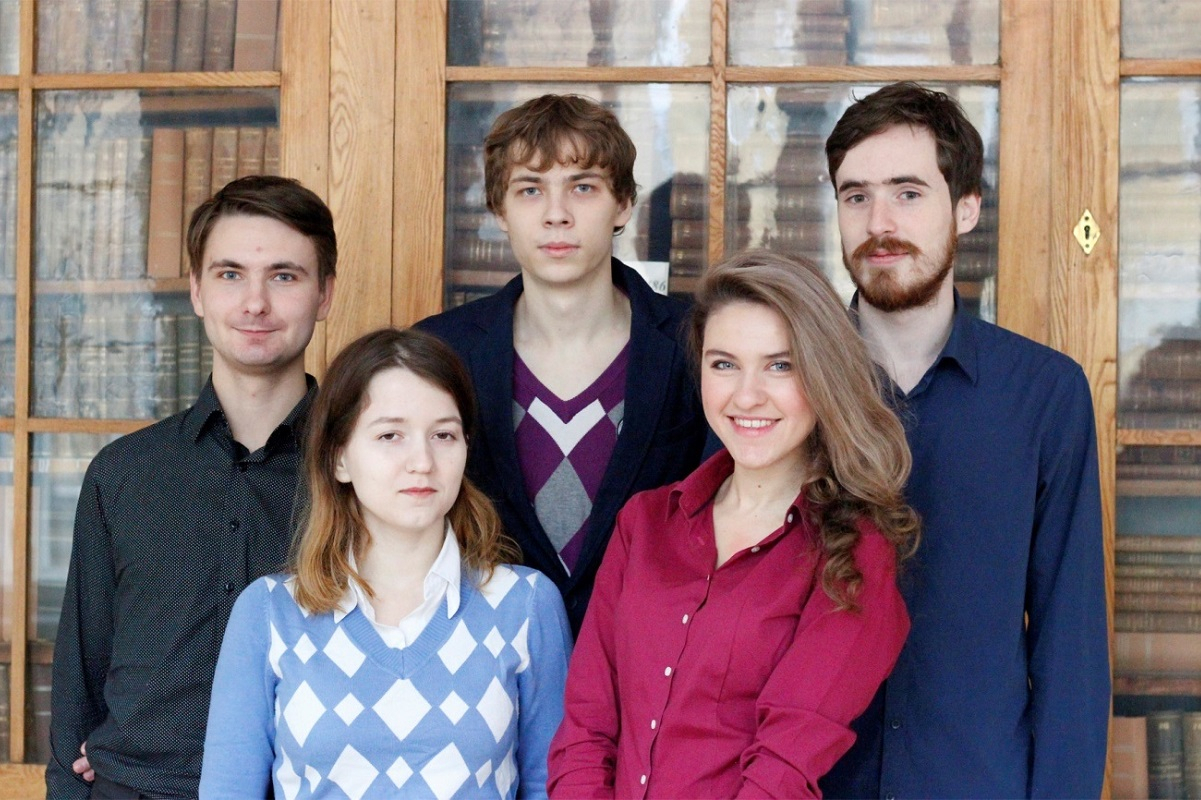University students find a way to transform stem cells into donor tissues with maximum tolerance

A group of students at St Petersburg University has developed a method for obtaining a universal donor stem cell line that could, in the long run, help solve the problem of donor tissue being rejected. The project, Know-How in the Field of Biology and Transplant Medicine, has made it into the finals of the SPbU Start-Up – 2019 contest.
One of the problems of transplantation today is low tissue tolerance. If the donor tissue is not obtained from the recipient or one of their relatives, it is very likely that the cells will be rejected by the body’s immune system. The solution to this problem can be found in nature: when it gives birth to a new life, a mother’s body does not reject the placenta, although half of it is composed of alien cells.
Like a mosaic, the placenta is formed partly of fetal cells and partly of the mother’s cells, and, if there were no mechanism to help them survive, the mother’s immune system would destroy half of the cells. There is, however, such a mechanism: HLA-G protein, which provides tolerance to genetically alien cells.
Ivan Voropaev, a master’s student in Biology and captain of the project team
In order to create donor tissues, pluripotent stem cells are used today, and, under certain conditions, they can be differentiated into all kinds of cells in the body. In other words, these are cells that have the potential of transforming into any other cells. The material obtained from pluripotent cells, however, is likely to be rejected by the recipient. To prevent this from happening, the students incorporated the HLA-G gene into the pluripotent cell genome with a constitutive promoter, a regulatory site in the nucleotide chain that allows the gene to be expressed in any type of tissue. This means that the protein produced by the HLA-G gene can manifest itself in all tissues of an adult’s body. ‘Any cell types we get,’ Mr Voropaev stresses, ‘will be protected from the immune system.’
Another problem that arises now that pluripotent cells are being used in donor tissue is the risk of tumors forming in the recipient. As it turns out, not all stem cells are differentiated. Some can remain stem-bearing, and subsequently – once they are already in the body – they can turn completely unpredictable. So, for example, a person can have liver cells in their skin and muscle cells in their pancreas. If this happens, a teratoma is formed in the body, and this tumor is actually the first stage of cancer.
The students propose to solve this problem by adding another gene to the cell structure – thymidine kinase. After differentiation, the cells must be put in a medium with the antiviral drug ganciclovir, as it makes thymidine kinase toxic to the cells in which it is contained. In this way, undifferentiated stem cells with thymidine kinase in such a medium will kill themselves, and the risk of teratoma occurring in the body will vanish. Such a method, as Mr Voropaev says, makes it possible to separate differentiated cells from pluripotent ones much more quickly and inexpensively, which, in the long run, will make donor tissues available to more people.
The students’ intention is to create a line of universal induced pluripotent stem cells, which would make it possible to produce donor tissues ‘en masse’.
‘If we obtain a universal donor line that will allow us to create a whole range of differentiated cells – neurons, muscles, pancreatic cells, liver cells – it will be possible to transplant them to anyone, without having to stop and think about whether they are appropriate or not. And, in the long run, this will really standardise the technology and make it less expensive. Which is to say that we will get assembly-line instead of custom-made production,’ explained the project team’s captain, Mr Voropaev.
Down the road, the resultant pluripotent cell line could be used to help people with type 1 diabetes. This disease is characterised by the destruction of beta cells in the pancreas, which produce insulin in the body. This is caused by an immune attack on the body. The HLA-G gene introduced by the students into the donor line genome will produce pancreatic cells capable of overcoming a patient’s immunity resistance.
The initial stages of the work have been completed, the cells of the universal donor line have been obtained, and it is in the plans to prove the mRNA gene HLA-G is present in them before the finals of the competition. This will indirectly prove the presence of the HLA-G gene’s protein product. Further on down the line, the students expect that the major pharmaceutical companies will take an interest in the project, and this will help them carry out extensive laboratory, pre-clinical and clinical studies of the technology.
Along with team captain Ivan Voropaev, two more Biology master’s students, Dmitrii Grekhnev and Mikhail Gordeev, are also working on the project, as are Tatiana Koshcheeva, a student in the General Medicine programme, and Alina Sokolova, who is a master’s student in the Media Communications programme. Professor Aleksei Tomilin, Head of the Laboratory of Cellular and Molecular Biology, Doctor of Biology, and a Corresponding Member of the Russian Academy of Sciences, is the project’s research supervisor. The work is being carried out in the Laboratory of the Molecular Biology of Stem Cells at the Institute of Cytology, which is a part of the Russian Academy of Sciences.

